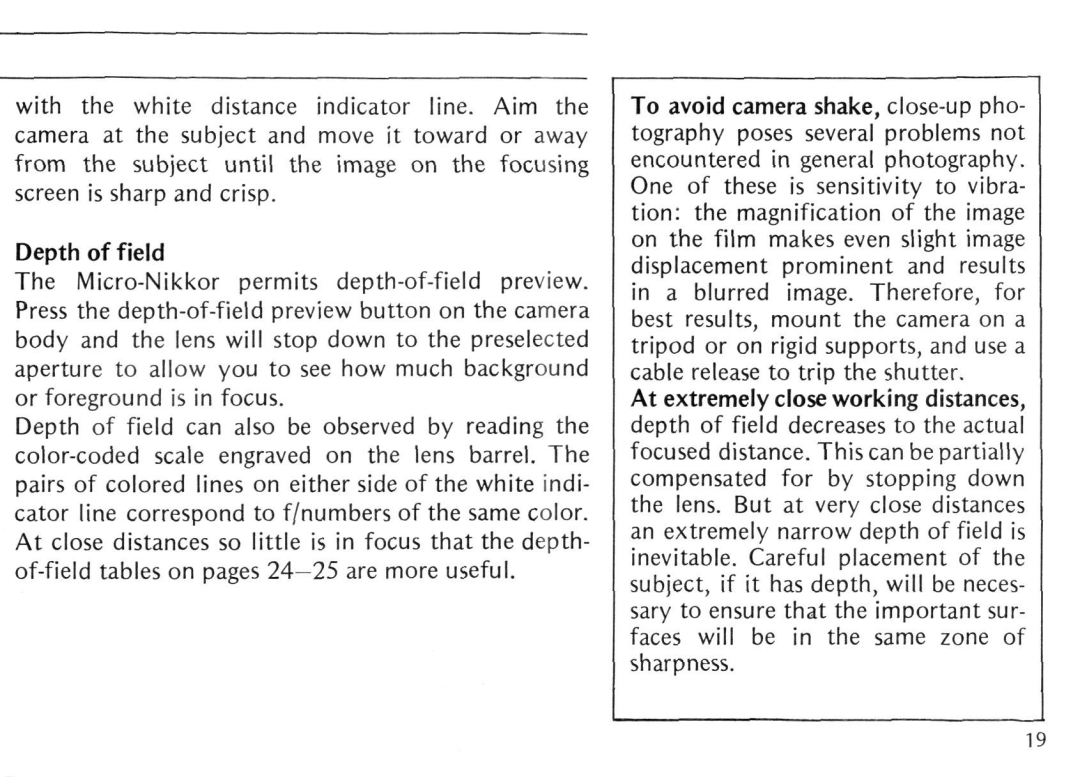with the white distance indicator line. Aim the camera at the subject and move it toward or away from the subject until the image on the focusing screen is sharp and crisp.
Depth of field
The Micro-Nikkor permits depth-of-field preview. Press the depth-of-field preview button on the camera body and the lens will stop down to the preselected aperture to allow you to see how much background or foreground is in focus.
Depth of field can also be observed by reading the color-coded scale engraved on the lens barrel. The pairs of colored lines on either side of the white indi- cator line correspond to f/numbers of the same color. A t close distances so little is in focus that the depth- of-field tables on pages 24—25 are more useful.
To avoid camera shake, close-up pho- tography poses several problems not encountered in general photography. One of these is sensitivity to vibra- tion: the magnification of the image on the film makes even slight image displacement prominent and results in a blurred image. Therefore, for best results, mount the camera on a tripod or on rigid supports, and use a cable release to trip the shutter.
At extremely close working distances,
depth of field decreases to the actual focused distance. This can be partially compensated for by stopping down the lens. But at very close distances an extremely narrow depth of field is inevitable. Careful placement of the subject, if it has depth, will be neces- sary to ensure that the important sur- faces will be in the same zone of sharpness.

